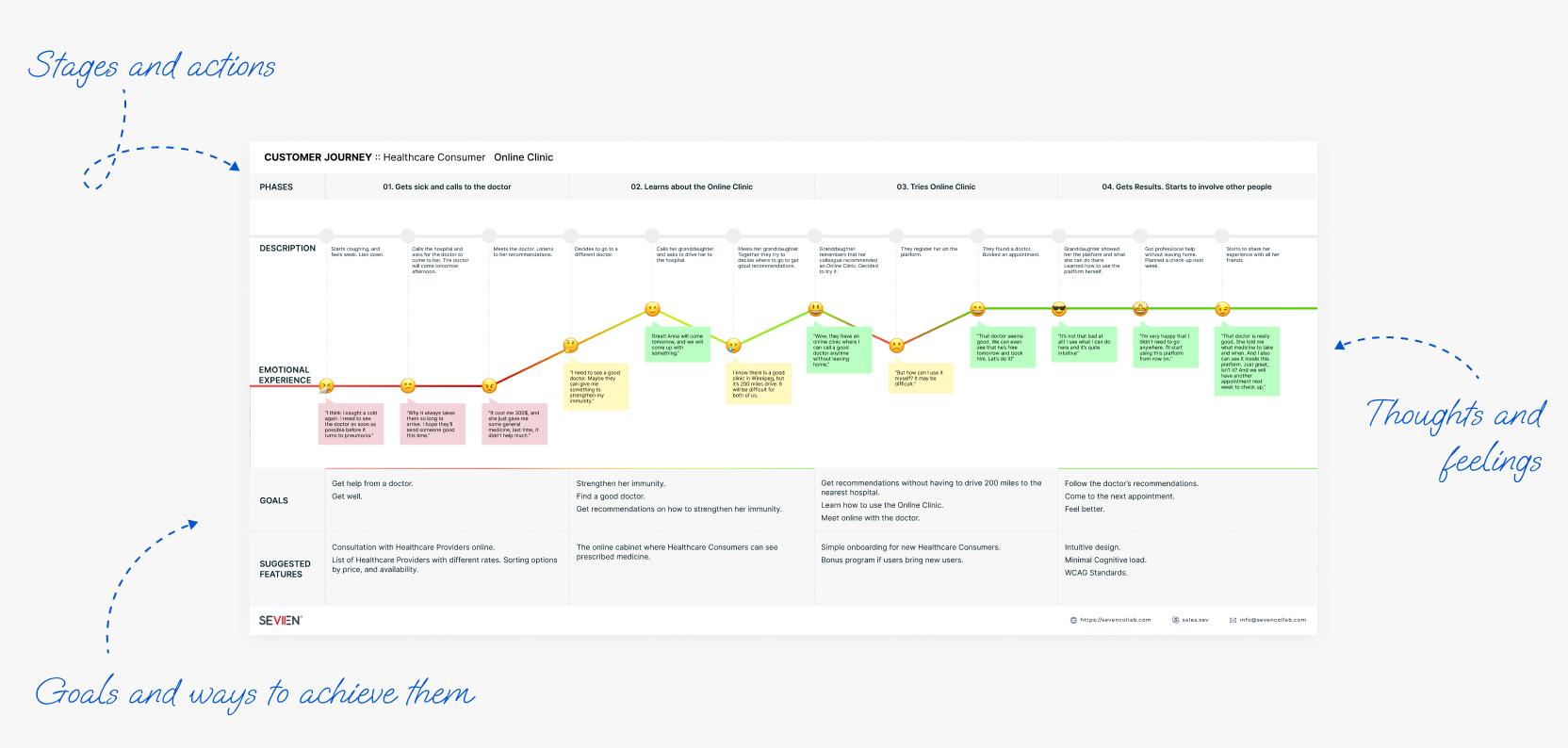There are a lot of ways to gain better insights during the product design process, and a customer journey map (CJM) is one of them. It’s a method that can be used both before and after the product release. It essentially allows you to look at the product through the eyes of a customer. The journey from becoming aware of your product to the final interaction.
A customer journey map can shed light on many aspects depending on your goals. It’s a document (the way it looks is up to your creativity) that offers an analysis of the current state of the project and how an individual user feels while trying to navigate the software and get the required result. We’ve decided to focus on five major benefits that in turn lead to other improvements both during and post-development.
Decrease development and deployment risks
CJM is a research tool that allows you to look at the market needs from the customer’s angle. For example, you’ll see how much time the user needs to make a purchase. Which steps are necessary? Is there anything unclear or foggy? Will you lose conversions due to some factor? A customer journey map allows answering those questions and more.
You can find the weak links of the product, eliminating them even before the development, during software prototyping. This way, you’ll be one step closer to a product that’s aligned with the user’s needs and preferences. This approach helps reduce the risks and prevent wasting more money trying to adapt to a previously unknown need.
Build a customer-centric service
We keep stressing this both to our clients and across many articles on this blog. If there’s a choice between cutting-edge technology and something very familiar to the user, opt for the latter. An average user likely won’t notice how smoothly your app shifts the data between servers.
On the other hand, that same user will appreciate it if yet another app they use (an average American has 80 applications on their phone, with a similar number across the globe) is straightforward and looks somewhat the same as everything else. That’s the harsh truth – users are happier when there’s no cognitive load required to complete the interaction. The first need is to get the service fast with minimum actions. The rest is a pleasant bonus.

Simplify user experience and reduce the time required to make a sale
A natural successor to the previous point. Good experience is intuitive, and the one that feels unique and personal. CJM will let you see the number of steps each user needs to take to make a conversion. The next goal is to try and decrease the number of steps as much as possible. It’s very effective because it works with existing product data and imaginary figures. You can create an optimal interaction scenario and implement it in a Software Prototype and then in a Minimum Viable Product. That’s when you’ll find the technology that fits your budget and timeframe, validate design, functionality, and more.
The CJM is a stone heading for two birds. You’ll make life easier for users and give yourself a chance to boost conversions number. Simple and effective products attract attention and more users gradually over time. This benefit is especially powerful during the prototyping stage. You can optimize the entire sales funnel before developing the product, saving you lots of time in the future.
Boost client engagement and loyalty
Everybody loves a product that can solve a problem fast. Remember the last time you enjoyed using a certain product – chances are you’ll be more inclined to use it in the future. And when the competitor offers something new, you’ll think, “Oh, I wish [product name] could do it too.”
That feeling of using software that gets things done seamlessly and efficiently is a great contributing factor to loyalty. And when you focus on creating that experience for the users, it will pay off with an engaged audience that will grow through recommendations and positive reviews. A good customer journey map is a big step in that direction.
Find ways for future scaling
All knowledge gathered through the CJM can show the parts which can be improved when the time is right. Whether it’s a matter of increased user number or adding new services, you will be more prepared to adapt and to offer a pleasing experience to the customers.
Since CJM can show the needs of a customer, it will also provide an insight into the things they might need after the initial task is complete.
The Takeaway
Customer journey maps help live through the user experience and make corresponding changes during the prototyping stage or earlier. The market is full of platforms, services, and applications. One of the most sensible ways to stick out from the crowd is to offer a quick and enjoyable experience that will make people want to return for more.
CJMs help the stakeholders make decisions that lead towards a better user experience and facilitate growth and scaling.